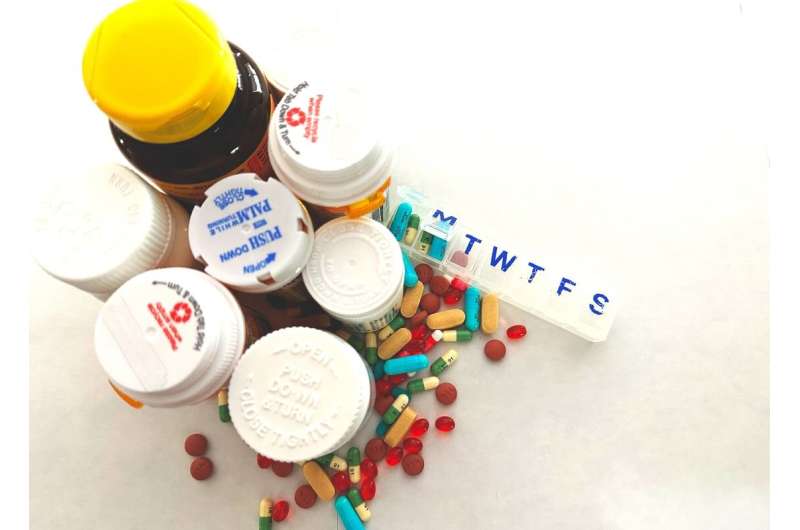This article has been reviewed according to Science X's editorial process and policies. Editors have highlighted the following attributes while ensuring the content's credibility:
fact-checked
peer-reviewed publication
trusted source
proofread
Research shows how much pharmaceutical companies are capitalizing on rare drug incentives

Drugs used to treat rare conditions are earning pharmaceutical companies almost as much as those marketed to the general public, according to a researcher at West Virginia University. Sean Tu, a College of Law professor found lucrative so-called "orphan" drugs earn manufacturing tax credits, have longer patent exclusivities and face easier Food and Drug Administration review.
Orphan drugs treat diseases that affect fewer than 200,000 Americans. In addition to tax credits, Congress has incentivized the pharmaceutical companies that manufacture orphan drugs with a waiver of prescription drug user fees and by offering seven years of market exclusivity after the drug is approved, rather than the standard five years.
Orkambi is an example of an orphan drug used to treat cystic fibrosis, a genetic disorder that affects the lungs and other organs. Only around 30,000 Americans have been diagnosed, but Tu's data shows the drug made $5 billion over the last five years. In contrast, Entyvio, a drug used to treat Crohn's disease or ulcerative colitis, also made $5.5 billion over the last five years, but treats around one million Americans.
"There has been a dramatic increase in the number of orphan drugs over the past three decades," Tu said.
In the late 1980s, 5% of new drugs were directed to orphan indications. That number has risen to 43% in 2023.
Tu's findings are published in the Journal of the American Medical Association (JAMA).
He said pharmaceutical companies have every reason to take advantage of the range of incentives.
"They get fast-track FDA approval and also get to use 'surrogate endpoints,'" Tu said. "These are signs that indicate a treatment is working without having to conduct lengthy, large-scale clinical trials. Scientists can use smaller groups of patients for shorter time periods, thereby dramatically lowering the costs associated with FDA approval."
However, the range of incentives has altered the manufacturing and distribution of orphan drugs.
"I can either charge $1 to a million people or I can charge one person a million dollars. I'm still making a million dollars at the end of the day. The question is why we should be giving these drug companies all these advantages and all these bonuses when they're making just as much money on orphan drugs as they are on their normal non-orphan drug indications."
The purpose of the Orphan Drug Act—enacted in 1983 to spur development of drugs for rare diseases such as Huntington's disease, Tourette syndrome and myoclonus—was to compensate pharmaceutical companies for doing research and investing in orphan drugs. Congress assumed drug companies would not make profits when investing in rare diseases.
"This assumption was incorrect," Tu said. "The Orphan Drug Act came from a good place and we still need companies to invest in orphan drugs. However, we shouldn't have a system where we only invest in orphan drugs. Under the current system, we are getting more and more drugs developed for rare diseases, leaving other populations increasingly marginalized."
Another problem is that many rare diseases are only treated by one drug. In such cases, insurance companies must cover them, so pharmaceutical companies can charge high prices knowing they'll be compensated.
"If I'm trying to maximize social welfare, I want to help the most people I can with the limited resources I have," Tu said. "So am I going to invest my limited resources in drugs that affect only 200,000 people, or am I going to invest in drugs that affect 300 million people? Right now, the government is over-incentivizing drug companies to invest in the 200,000 people, and I don't think that's a great way to spend our money."
More information: S. Sean Tu et al, Five-Year Sales for Newly Marketed Prescription Drugs With and Without Initial Orphan Drug Act Designation, JAMA (2023). DOI: 10.1001/jama.2023.3079


















